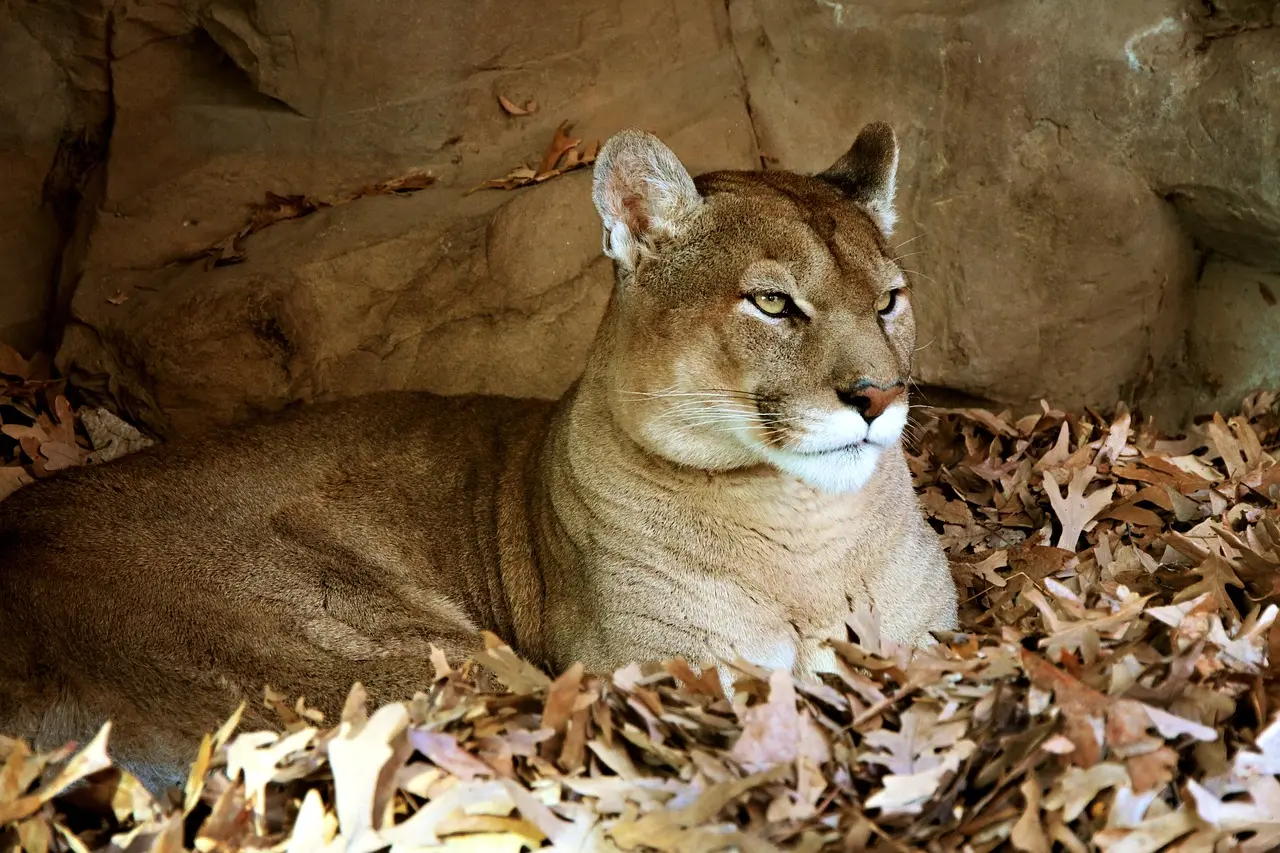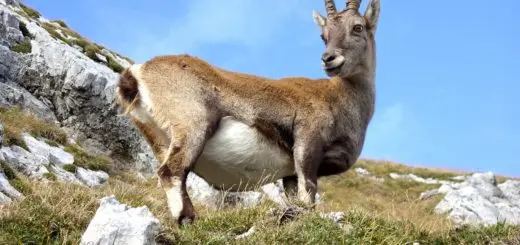Spiritual Meaning of the Mountain Lion: A Symbol of Power

Looking for more amazing products? Check out our online store and explore our collection here! Happy shopping!
Before diving in, please note: This post is for informational purposes only. If you’d like to know more about how we approach topics, feel free to check out our friendly Disclaimer Page.
Hey there, amazing readers! 
We’re committed to delivering quality posts, and your support (even just sticking around despite the ads) means everything to us. So, bear with us, and thanks for helping us keep the good vibes rolling. Now, on to the fun stuff!
TRANSLATE BUTTON AT THE END OF THE ARTICLE
“The mountain lion, with its majestic presence and powerful nature, holds profound spiritual significance.
It symbolizes resilience, courage, and the ability to navigate challenging terrains, reminding us of our inner strength and the power to overcome obstacles.
Its association with the mountain peaks represents ascension and the pursuit of higher consciousness.
It serves as a reminder of our potential to tap into our inner wisdom and achieve personal growth.”
Mountain lions, also known as cougars or pumas, are majestic creatures that have long captivated the human imagination.
In many cultures, they hold a significant place, often representing a symbol of power.
These graceful and elusive big cats are more than just apex predators; they are spiritual icons that have inspired awe and reverence.
In this extensive exploration, we will delve deep into the spiritual meaning of the mountain lion and how it embodies the concept of power.
The Mountain Lion in Nature
Before we dive into its spiritual significance, it’s essential to understand the mountain lion’s natural characteristics and behavior.
Mountain lions are solitary creatures that primarily inhabit North and South America.
They are known for their incredible strength, agility, and keen senses.
These qualities alone make them awe-inspiring creatures in the wild.
Physical Attributes
Mountain lions are well-adapted predators.
They possess muscular bodies, powerful limbs, and sharp claws.
Their distinctive appearance, with tawny fur and a long tail, exudes a sense of raw power.
Their coats may vary in color from reddish-brown to gray, adapting to their surroundings.
These physical attributes are a testament to their adaptability and their role as apex predators.
Mountain lions are designed for survival in a variety of environments, from the dense forests of the Pacific Northwest to the arid deserts of the American Southwest.
Stealth and Hunting
One of the remarkable qualities of mountain lions is their stealth.
They are expert stalkers, capable of silently approaching their prey.
Their padded paws allow them to move quietly through the forest, making them incredibly efficient hunters.
They often rely on ambush tactics, patiently waiting for the right moment to strike.
This extraordinary hunting ability reinforces their image as powerful beings in the natural world.
Their ability to hunt with precision is not only an essential aspect of their survival but also a symbol of their mastery over the art of predation.
Territorial Behavior
Mountain lions are territorial animals, and they fiercely defend their home ranges.
This territoriality reflects their dominance in the wild, symbolizing their power over their domain.
Their territories can span vast areas, sometimes as large as 200 square miles, depending on the availability of prey.
This territorial behavior is a testament to their adaptability and ability to claim and protect their resources.
It’s a reminder of the inherent connection between power and survival in the natural world.
Connect with Angels, Guides, and Master Teachers – begin here.
Survival Instinct
The mountain lion’s ability to survive and thrive in diverse ecosystems is a testament to their adaptability and resilience.
Their solitary nature means they must be self-reliant in hunting, finding shelter, and avoiding threats.
This self-sufficiency is another manifestation of their power, as they have honed their survival skills over millions of years.
The Symbolism of the Mountain Lion
Now that we’ve explored the physical attributes and behavior of mountain lions, let’s delve into the symbolism they carry in various cultures and belief systems.
Power and Dominance
In many indigenous cultures, the mountain lion is regarded as a symbol of power and dominance.
Its presence in the wild signifies the apex of the animal kingdom, reminding us of the strength and authority that can be harnessed when needed.
The mountain lion’s dominance in the natural world mirrors the potential for strength and authority within each of us.
It serves as a symbol of empowerment, encouraging us to tap into our inner reservoirs of strength when faced with life’s challenges.
Courage and Leadership
The mountain lion’s solitary nature is seen as a representation of courage and leadership.
Just as it roams alone in the wilderness, it encourages us to embrace independence and take charge of our lives.
In our own journeys, we can draw inspiration from the mountain lion’s ability to navigate the world alone, showing us that we, too, can find the courage and leadership necessary to face our own paths.
Spiritual Guardians
Native American tribes often consider the mountain lion as a spiritual guardian.
It is believed to watch over and protect those who show reverence to the land and nature.
This spiritual connection emphasizes the mountain lion’s role as a symbol of power in both the physical and spiritual realms.
The mountain lion’s role as a spiritual guardian highlights its significance in Native American culture.
It reinforces the idea that power and protection are intertwined, and by honoring the natural world, we can find spiritual guidance and strength.
Independence and Self-Reliance
The mountain lion’s ability to survive on its own and rely on its instincts resonates with the idea of independence and self-reliance.
It encourages us to trust our inner guidance and instincts, fostering self-sufficiency and self-confidence.
Embracing self-reliance and independence is a way to tap into the inner power that the mountain lion symbolizes.
It serves as a reminder that we have the strength to overcome challenges and achieve our goals.
Mountain Lions in Mythology and Folklore
Mythological Significance
Many mythologies incorporate the mountain lion as a significant figure.
In Aztec mythology, the mountain lion was associated with the god Tezcatlipoca, symbolizing the deity’s destructive and regenerative aspects.
This connection highlights the duality of power, which can both create and destroy.
The mountain lion’s role in mythology often underscores its capacity to bring about change, whether through destruction and rebirth or through the transformative power of its presence.
Folklore and Stories
Folklore from various cultures is rich with tales of the mountain lion.
In some Native American stories, the mountain lion is a wise and powerful figure that imparts valuable lessons.
These stories illustrate how the mountain lion embodies not only physical power but also wisdom.
These stories often feature the mountain lion as a teacher, a guide, or a source of wisdom, emphasizing its role as a symbol of not only physical but also intellectual and spiritual power.
Spirit Animal and Totem
For many individuals, the mountain lion serves as a spirit animal or totem.
It is believed that connecting with the spirit of the mountain lion can provide guidance and strength.
Those who resonate with this majestic creature often seek its attributes of power and courage to overcome life’s challenges.
The mountain lion’s role as a spirit animal or totem is a testament to its enduring presence in people’s lives.
It symbolizes the ongoing connection between humans and the natural world, offering guidance and inspiration.
The Mountain Lion’s Role in Modern Society
Conservation and Awareness
As modern society encroaches on wild habitats, the mountain lion’s role has expanded to become a symbol of conservation and environmental awareness.
Efforts to protect these big cats not only preserve their physical presence but also the spiritual symbolism they carry.
Conservation organizations and individuals dedicated to preserving the mountain lion’s habitat recognize its importance in maintaining the balance of ecosystems.
The mountain lion’s presence serves as a reminder of the delicate web of life that we must protect.
Biodiversity and Ecosystem Health
The mountain lion’s position as an apex predator is crucial for maintaining biodiversity and ecosystem health.
As top predators, they help regulate the populations of prey species, preventing overgrazing and promoting a healthy balance in natural environments.
The mountain lion’s role as a regulator of ecosystems underscores its significance in maintaining the vitality of wilderness areas.
It demonstrates the interconnectedness of all life and the power that a single species can exert on the broader environment.
Wildlife Management and Coexistence
Human populations continue to expand into mountain lion territory, leading to increased interactions between these animals and people.
Successful coexistence and wildlife management strategies are essential to reduce conflicts and protect both human and mountain lion populations.
The efforts to develop effective management strategies and promote coexistence highlight the complex relationship between human activities and the power of nature.
It is a testament to our capacity to adapt and find solutions to protect both our interests and the well-being of these magnificent creatures.
Conclusion
In conclusion, the mountain lion represents a profound symbol of power in both the natural world and the realms of spirituality.
Its physical prowess, stealth, territorial behavior, and survival instincts make it a compelling force in the wild.
Moreover, its spiritual significance as a guardian, symbol of courage, and mythological figure underscores its enduring power in human culture.
The mountain lion’s ability to inspire strength and independence, both in the wilderness and within ourselves, makes it a compelling emblem of power.
As we continue to admire and protect these magnificent creatures, we honor their role as both a predator in nature and a source of spiritual guidance.
Frequently Asked Questions
Q1: Are mountain lions dangerous to humans?
A1: Mountain lions are generally elusive and avoid human contact.
However, like any wild animal, they can pose a threat if cornered or provoked.
It’s essential to respect their space and behave cautiously in their habitats.
Q2: What does it mean if a mountain lion appears in my dreams?
A2: In many belief systems, encountering a mountain lion in a dream may symbolize inner strength, courage, or a need to assert your authority in a situation.
It can be a powerful symbol of self-discovery.
Q3: How can I connect with the spirit of the mountain lion?
A3: To connect with the spirit of the mountain lion, spend time in nature, meditate, and learn about its symbolism.
Many people find that by understanding the animal’s qualities and attributes, they can draw on its power for guidance.
Q4: What can we do to protect mountain lions and their habitats?
A4: Supporting conservation organizations, promoting responsible land use, and advocating for laws that protect these animals and their habitats are crucial steps to ensure the survival of mountain lions.
Q5: What are some recommended books or resources on mountain lion symbolism?
A5: There are several books and online resources that delve into the symbolism of mountain lions.
Some recommended readings include “Animal Speak” by Ted Andrews and “The Animal Wise Tarot” by Ted Andrews and Linda Galdy.
Q6: Do mountain lions have any cultural significance in Asian cultures?
A6: Mountain lions are not native to Asia, so they do not hold cultural significance in Asian cultures.
The significance of animals varies from region to region based on their natural habitat.
Q7: Can mountain lions be kept as pets?
A7: It is not safe or ethical to keep mountain lions as pets.
They are wild animals with specific needs and behaviors that cannot be met in a domestic setting.
It is also often illegal to keep them as pets in many places.
Q8: How do mountain lions communicate with each other?
A8: Mountain lions communicate through a variety of vocalizations, including growls, hisses, and screams.
They also use body language, such as tail positions and ear movements, to convey their intentions and emotions to other mountain lions.
Scent marking and marking with urine are also common forms of communication in the wild.

The Enlightenment Journey is a remarkable collection of writings authored by a distinguished group of experts in the fields of spirituality, new age, and esoteric knowledge.
This anthology features a diverse assembly of well-experienced authors who bring their profound insights and credible perspectives to the forefront.
Each contributor possesses a wealth of knowledge and wisdom, making them authorities in their respective domains.
Together, they offer readers a transformative journey into the realms of spiritual growth, self-discovery, and esoteric enlightenment.
The Enlightenment Journey is a testament to the collective expertise of these luminaries, providing readers with a rich tapestry of ideas and information to illuminate their spiritual path.
Our Diverse Expertise
While our primary focus is on spirituality and esotericism, we are equally passionate about exploring a wide range of other topics and niches 

To ensure we provide the most accurate and valuable insights, we collaborate with trusted experts in their respective domains 
Our blog originally focused on spirituality and metaphysics, but we’ve since expanded to cover a wide range of niches. Don’t worry—we continue to publish a lot of articles on spirituality! Frequently visit our blog to explore our diverse content and stay tuned for more insightful reads.
Hey there, amazing reader! 
Check out our store here and take a peek at some of our featured products below! Thanks for being awesome!













